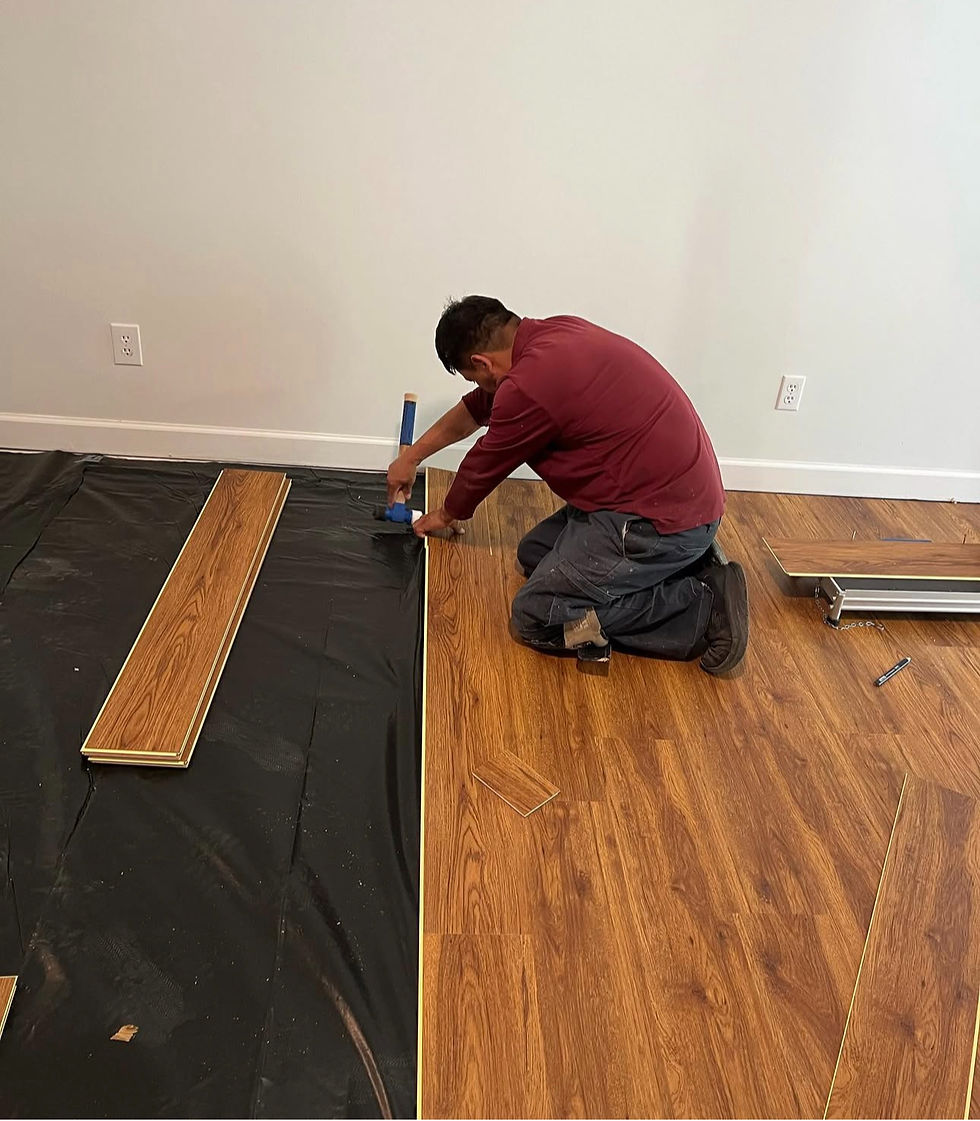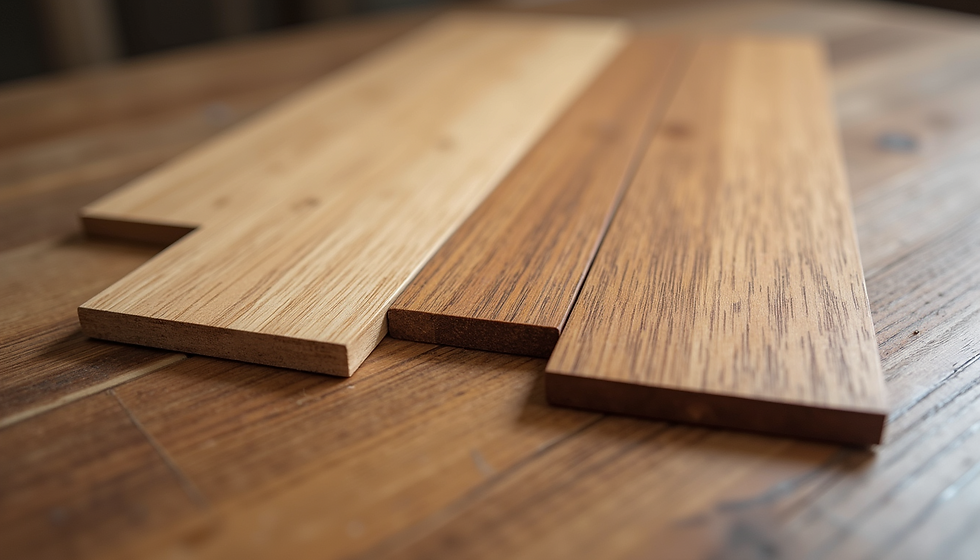Upgrade Your Home with Luxury Vinyl Plank Installation
- Peyton Moffitt
- Aug 12
- 4 min read
When it comes to enhancing the look and feel of your home, choosing the right flooring is essential. Vinyl flooring has become a popular choice for many homeowners due to its durability, affordability, and stylish appearance. If you are considering a home upgrade, vinyl flooring installation offers a practical and attractive solution that can transform any room.
Benefits of Vinyl Flooring Installation
Vinyl flooring is known for its versatility and resilience. Here are some key benefits that make it a top choice for home improvement projects:
Durability: Vinyl floors can withstand heavy foot traffic, making them ideal for busy households.
Water Resistance: Many vinyl options are water-resistant or even waterproof, perfect for kitchens, bathrooms, and basements.
Easy Maintenance: Vinyl floors are simple to clean with regular sweeping and occasional mopping.
Variety of Styles: Available in a wide range of colors, patterns, and textures, vinyl can mimic the look of wood, stone, or tile.
Comfort: Softer underfoot compared to hardwood or tile, vinyl provides a comfortable walking surface.
Installing vinyl flooring can also increase your home’s value and appeal to potential buyers if you decide to sell in the future.

Choosing the Right Vinyl Flooring Installation Method
There are several methods for vinyl flooring installation, and selecting the right one depends on your specific needs and the condition of your subfloor. The most common types include:
Glue-Down Vinyl: This method involves adhering the vinyl directly to the subfloor using a strong adhesive. It provides a very stable and durable surface, ideal for commercial spaces or high-traffic areas.
Click-Lock or Floating Vinyl: These planks snap together and float above the subfloor without glue. This method is easier and faster to install, making it a favorite for DIY projects.
Loose Lay Vinyl: Designed to stay in place due to its weight and backing, loose lay vinyl is simple to install and remove, suitable for temporary or rental spaces.
Before installation, ensure the subfloor is clean, dry, and level. Uneven surfaces can cause issues with vinyl flooring performance and appearance.

Is it better to glue or float LVP?
When deciding between gluing down or floating luxury vinyl plank (LVP) flooring, consider the following factors:
Subfloor Condition: Glue-down LVP requires a smooth, clean subfloor. Floating LVP can tolerate minor imperfections.
Installation Time: Floating floors are quicker to install since they don’t require adhesive drying time.
Durability: Glue-down floors tend to be more stable and less prone to shifting, which is beneficial in high-traffic areas.
Sound and Feel: Floating floors may have a slight hollow sound and feel underfoot, while glued floors feel more solid.
Removal and Replacement: Floating floors are easier to remove and replace without damaging the subfloor.
Ultimately, the choice depends on your budget, room usage, and personal preference. Consulting with a flooring professional can help you make the best decision for your home.

How to Prepare Your Home for Vinyl Flooring Installation
Proper preparation is key to a successful vinyl flooring installation. Follow these steps to get your home ready:
Clear the Room: Remove all furniture, rugs, and appliances.
Remove Old Flooring: Depending on the type of existing floor, you may need to remove it or ensure it is compatible with vinyl installation.
Clean the Subfloor: Sweep and vacuum to remove dust and debris.
Check for Moisture: Use a moisture meter to ensure the subfloor is dry, especially in basements or bathrooms.
Level the Surface: Fill in any cracks or holes and sand down high spots.
Acclimate the Vinyl: Let the vinyl planks sit in the room for 48 hours to adjust to the temperature and humidity.
Taking these steps will help ensure your new floor looks great and lasts for years.
Tips for Maintaining Your Vinyl Flooring
Once your vinyl flooring is installed, maintaining its beauty and durability is straightforward. Here are some practical tips:
Regular Cleaning: Sweep or vacuum regularly to remove dirt and grit that can scratch the surface.
Use Gentle Cleaners: Avoid harsh chemicals; use a vinyl floor cleaner or a mixture of water and mild soap.
Protect from Furniture: Use felt pads under furniture legs to prevent dents and scratches.
Avoid Excess Water: While vinyl is water-resistant, standing water can seep into seams and cause damage.
Address Spills Quickly: Wipe up spills immediately to prevent staining or warping.
By following these simple maintenance tips, your vinyl floor will continue to look fresh and new.
Enhance Your Home with Professional Installation
For the best results, consider hiring professionals for your luxury vinyl plank installation. Experts have the experience and tools to handle any challenges and ensure a flawless finish. They can also provide advice on the best products and installation methods for your specific needs.
Upgrading your home with vinyl flooring installation is a smart investment that combines style, comfort, and practicality. Whether you choose to do it yourself or hire a professional, the right preparation and care will make your new floor a beautiful feature for years to come.





Comments